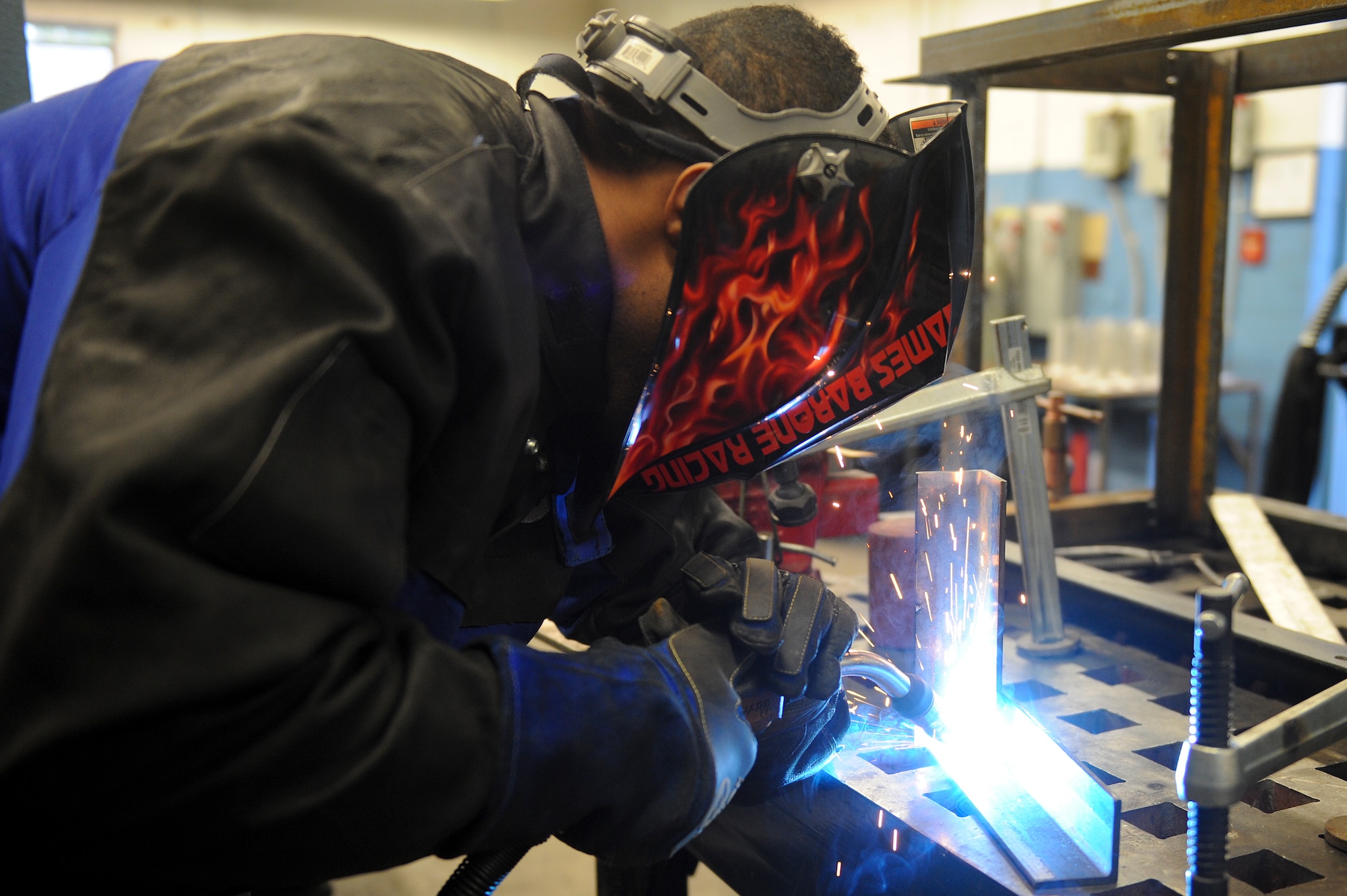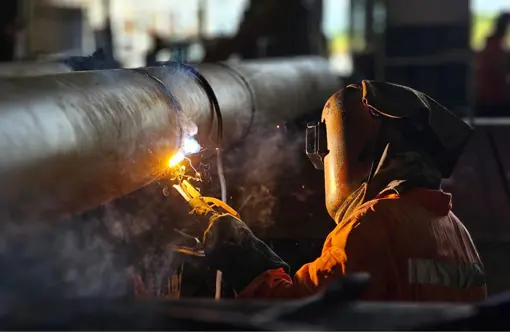Steps to success for poor fusion from Montana Mobile Welding and Repair
Usual Welding Repair Service Issues and Exactly How to Address Them Properly
Welding fixings typically come across a variety of concerns that can endanger the stability of the end product. Common problems include insufficient infiltration, porosity, and imbalance, to name a few. Each problem offers special challenges that call for specific techniques for resolution. Understanding these concerns is important for welders aiming to improve their abilities and end results. This discussion will discover these usual welding repair concerns and reliable techniques to resolve them.
Inadequate Infiltration
Poor penetration takes place when the weld metal fails to fully fuse with the base product, resulting in weak joints and prospective architectural failings. This concern usually stems from insufficient heat input, inaccurate electrode angle, or inappropriate welding rate. Welders may come across poor infiltration as a result of a miscalculation of the needed specifications for a details material density or kind. In addition, contamination on the base product's surface can prevent efficient bonding, exacerbating the trouble. To resolve inadequate infiltration, welders should guarantee proper settings on their tools and maintain a clean work surface. Regular examination of welds is recommended to determine any type of deficiencies early, permitting timely improvements and the avoidance of endangered architectural honesty in bonded assemblies.
Porosity
Porosity is a typical defect in bonded joints that shows up as small gas bubbles trapped within the weld metal. This defect can compromise the stability of the weld, leading to decreased toughness and possible failing under stress. Fabrication. Porosity normally emerges from contamination, dampness, or improper welding methods, which enable gases to escape into the liquified weld pool. To resolve porosity, welders must assure appropriate surface area prep work, maintain a clean workplace, and use suitable welding parameters. Additionally, picking the ideal filler material and protecting gas can minimize gas entrapment. Regular examination and testing of welds can aid recognize porosity early, ensuring prompt corrective actions are taken, therefore preserving the top quality and dependability of the welded structure
Imbalance
Imbalance in welding can occur from various factors, consisting of inappropriate arrangement and thermal development. Comprehending the origin is crucial for effective resolution. Numerous improvement techniques are available to realign parts and assure structural integrity.
Sources of Misalignment
Welding misalignment commonly stems from a selection of underlying issues that can endanger architectural stability. One main cause is improper fit-up of elements before welding, which can lead to spaces and unequal surface areas. Variations in thermal expansion throughout the welding process can also result in distortion, especially if the products being signed up with have different coefficients of growth. Furthermore, inadequate securing and fixturing may fall short to hold components securely in position, causing motion throughout welding. Inadequately kept devices, including welding machines and tools, may present disparities in the weld grain, more contributing to imbalance. Ultimately, operator mistake, coming from insufficient training or experience, can also play a substantial role in creating misaligned welds.
Improvement Methods Available
Attending to imbalance efficiently calls for a combination of rehabilitative methods customized to the details concerns at hand. One usual approach is the use of fixtures or jigs to hold parts in the proper setting during welding, making sure consistent positioning. In addition, pre-heating the materials can help in reducing distortion and improve fit-up. For substantial misalignment, mechanical adjustment strategies, such as using hydraulic jacks or clamps, can be utilized to correct the position before welding. Post-weld warm treatment might likewise be necessary to soothe anxieties triggered by misalignment. Lastly, cautious inspection and change during the setup phase can avoid imbalance issues from coming to be considerable troubles, advertising a smoother welding procedure and boosting overall structural integrity.
Distortion
Distortion is an usual challenge in welding that can occur from various elements, consisting of irregular heating & cooling. Understanding the reasons for distortion is necessary for implementing effective prevention methods. Resolving this problem not only improves architectural stability yet also improves the general top quality of the weld.
Sources of Distortion
When subjected to the extreme warmth of welding, products commonly undertake adjustments that can lead to distortion. This phenomenon largely develops from thermal development and tightening during the welding process. As the weld area warms up, the product expands; upon cooling, it contracts, which can develop inner anxieties. On top of that, unequal heating across a workpiece can exacerbate these stresses, causing warping or flexing. The kind of product also plays a substantial role; metals with varying thermal conductivity and coefficients of expansion may respond differently, leading to unpredictable distortions. Bad joint design and insufficient fixturing can contribute to imbalance throughout welding, increasing the chance of distortion. Recognizing these causes is crucial for effective welding repair service and avoidance strategies.
Avoidance Techniques
Reliable prevention techniques for distortion throughout welding concentrate on controlling heat input and making certain appropriate joint design. Preserving a consistent heat input helps to decrease thermal development and tightening, which can cause distortion. Making use of methods such as preheating the work surface can likewise decrease the temperature gradient, advertising uniform heating. Furthermore, choosing ideal joint layouts, such as T-joints or lap joints, can boost security and reduce stress and anxiety focus. Executing appropriate fixturing to secure the workpieces in place even more aids in preserving placement during the welding procedure. Finally, staggered welding sequences can distribute heat a lot more uniformly, stopping local distortion. By applying these methods, welders can substantially reduce the probability of distortion and improve the general high quality of their welds.
Breaking
Fracturing is a typical problem come across in welding repair services, typically arising from numerous aspects such as incorrect air conditioning prices, material selection, or inadequate joint preparation. The incident of cracks can significantly compromise the integrity of the weld, resulting in prospective failings throughout procedure. To address this issue, welders should initially assess the origin creates, image source making sure that materials work and properly selected for the specific application. Additionally, managing the air conditioning price throughout the welding procedure is crucial; quick air conditioning can generate anxiety and lead to splitting. Correct joint layout and prep work also contribute to minimizing the threat. Applying these methods can improve weld top quality and durability, eventually lowering the likelihood of breaking in finished weldments.

Insufficient Blend
A considerable concern in welding repairs is insufficient blend, which occurs when the weld steel does not effectively bond with the base product or previous weld passes - Montana Mobile Welding and Repair Belgrade. This defect can lead to weak points in the joint, possibly compromising the integrity of the bonded framework. Elements adding to insufficient combination consist of not enough warm input, inappropriate welding method, and contamination of the surface areas being signed up with. To resolve this problem effectively, welders need to assure proper pre-weld cleansing and surface area preparation, along with readjust their welding parameters to attain adequate penetration and blend. Normal examination throughout the welding procedure can additionally assist identify insufficient combination early, permitting timely restorative actions to boost the total quality of the weld
Overheating
While welding repair services can boost architectural integrity, overheating provides a significant obstacle that can cause product degradation. Too much warm throughout welding can alter the mechanical homes of metals, causing minimized stamina, raised brittleness, and warping. This sensation is specifically vital in high-stress applications where structural integrity is paramount. Recognizing overheating can include visual examinations for staining or distortion, in addition to keeping an eye on temperature during the welding process. To reduce the dangers related to overheating, welders ought to use suitable methods, such as managing warmth input, readjusting esab warrior travel rate, and using appropriate filler products. In addition, executing pre- and post-weld warmth therapies can assist recover product homes and improve the total high quality of the repair work, making sure long-term performance and security.
Regularly Asked Questions
What Are the Typical Indications of a Welding Flaw?

How Can I Check My Welds for Top quality?
To evaluate welds for high quality, one can make use of visual examinations, ultrasonic screening, and radiographic techniques. Each technique assures structural honesty, determines issues, and confirms adherence to specified requirements, ultimately improving the dependability of the bonded joints.
What Security Preventative Measures Should I Take While Welding?
When welding, one ought to focus on security by wearing appropriate individual safety devices, making sure correct air flow, safeguarding combustible products away, preserving a tidy work area, and knowing surroundings to avoid injuries and accidents.
Can I Fix a Weld Without Remodeling the Entire Joint?
Fixing a weld without remodeling the whole joint is feasible, depending upon the damage (Belgrade Welding). Techniques such as grinding, including filler product, or utilizing a welding process can properly resolve details defects while protecting the surrounding framework
What Devices Are Important for Effective Welding Services?
Vital tools for efficient welding repair work consist of a welding maker, wire brush, mill, safety equipment, clamps, and filler products. Each device plays a vital role in guaranteeing high quality and safety and security throughout the repair service procedure. Porosity generally arises from contamination, moisture, or improper welding techniques, which allow gases to get away into the molten weld swimming pool. Poorly maintained equipment, including welding machines and tools, may present inconsistencies in the weld bead, additional contributing to misalignment. When subjected to the extreme heat of welding, materials typically go through changes that can lead to distortion. Cracking is an usual issue come across in welding repairs, commonly resulting from various elements such as improper cooling prices, product selection, or inadequate joint preparation. A significant issue in welding repairs is insufficient blend, which happens when the weld steel does not More Info effectively bond with the base product or previous weld passes.